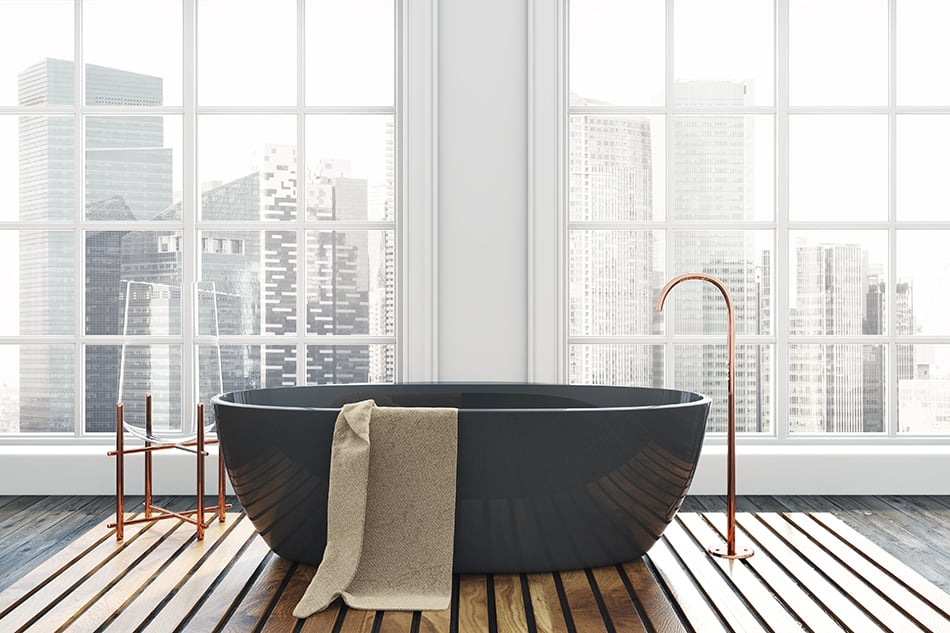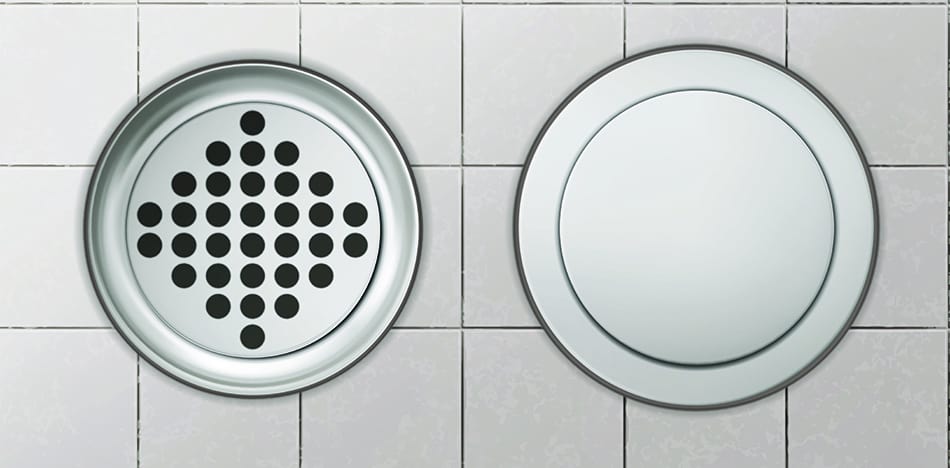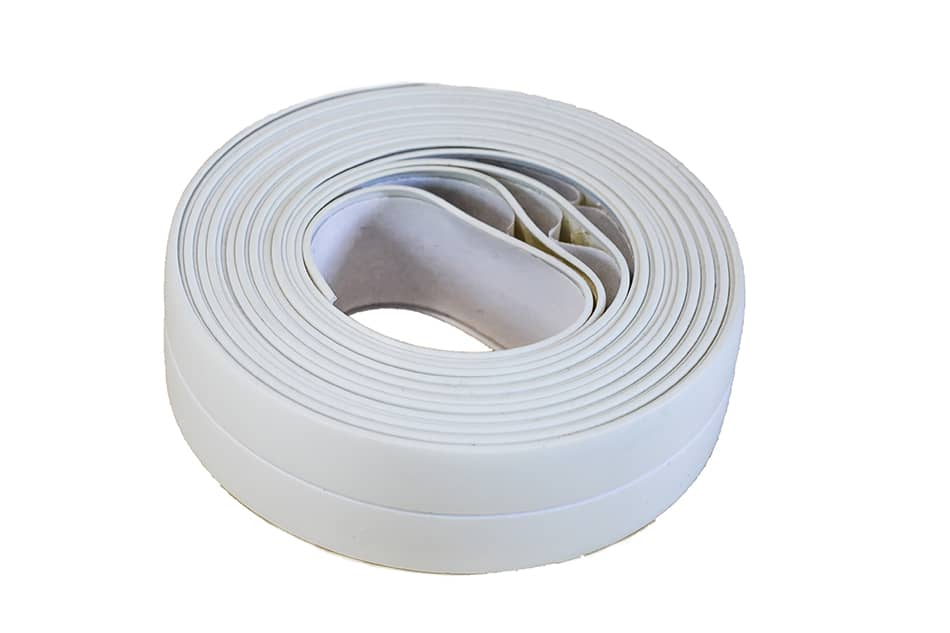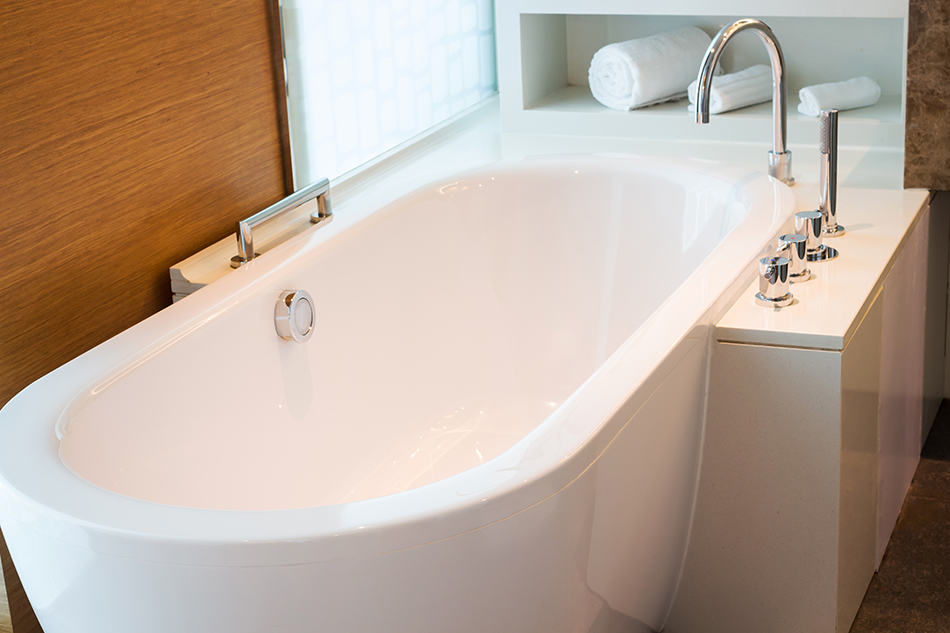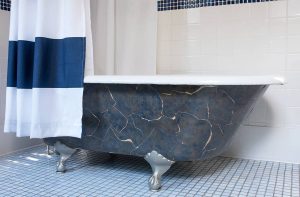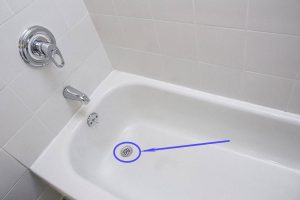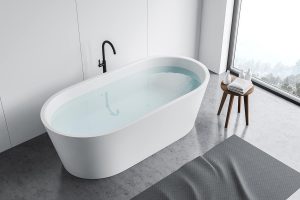This is a surprisingly common question, and there’s a clear reason why. Baths are a wonderful everyday luxury. There’s nothing quite like the feeling of soaking in a hot bath after a long day.
Sadly, that feeling of relaxation can quickly be replaced by disappointment. If your bathtub isn’t deep enough to hold the volume of water you need to really lounge and get submerged, you may as well settle for a shower. Fortunately, there are ways that you can make your existing bathtub deeper.
Most household baths are designed with an overflow drain hole. As the name suggests, the overflow drain hole is there to prevent water from spilling over the tub if, for whatever reason, you forget to close the faucets. It’s an essential safety feature that can save your floor, furniture, and appliances from damage. But it also means that you lose valuable water volume too.
One of the easiest things you can do is simply plug the overflow drain hole so your bath can hold more water. There are plenty of products available to do this, like plastic or metal covers or various adhesives. They can be permanent or temporary solutions.
Install a Metal Drain Cover Plate.
With a few household tools, you can have a metal drain cover plate installed. In fact, some models don’t even require more than a screwdriver and snap on with ease, so you could even handle the installation yourself. A metal cover plate is usually made of chrome. It fits snugly over the drain hole, preventing water from seeping out.
You should carefully measure the drain hole to ensure you buy the right size cover plate size. Having a drain cover plate fitted over your overflow holes is a permanent fix. If you have young children or don’t own the apartment or house you’re living in, you’ll need to find a solution that can be easily reversed or uninstalled.
Plug Your Drain Overflow with A Vinyl Cover.
Suppose you want a product that just does the job without tying you into something permanent. In that case, a vinyl overflow drain cover could be just the thing you need. There are different brands available, including Better Bath’s Deep Water Bath, SlipX Solution’s Bottomless Bath, and more. They all work in the same way, though. The drain cover is a roughly 4-inch piece of thick vinyl that has suction cups.
As far as devices go, this one couldn’t be easier to use. You simply cover the overflow drain, attaching the device with the suction cups to keep it in place, then run your bath. A vinyl overflow drain cover is considered among the best ways to increase the depth of your bath. It’s inexpensive and can be removed when you no longer need to use it. Plus, you don’t need to spend time or have tools to install it.
Plug the Drain with Sugru Moldable Glue.
Sugru is the brand name for a moldable adhesive that looks and feels like Play-Doh. The glue can be used for multiple purposes around the home and is available in bright colors, so it’s versatile. It blends into or stands out from anything that it’s stuck to, depending on the look you’re going for. When the glue is removed from its packaging and attached to a surface, it forms a solid and long-lasting silicone rubber bond within a day or two.
What’s fantastic about Sugru is that it can bond to various materials, including ceramic and most plastics, and it’s waterproof – two things that make it ideal to use in baths. All you need to do to use Sugru as an overflow drain cover is to fill the drain’s holes with it and leave it for at least 24 hours until it dries.
After this, you’ll see that the water can sit comfortably above the level of the drain, and you’ll have a fuller bath. Sugru is a practical, budget-friendly (and fun!) solution. It’s also a permanent plug, so you’ll want to keep an eye on your bath to make sure it doesn’t run over as you’re filling it.
Try Covering the Drain with Caulk Strips.
Ok, so the Sugru glue may be fun to use, but if the permanence of it doesn’t appeal to you, a different kind of adhesive may do the trick. A caulk strip is a roll of self-adhesive tape made of polyethylene. It can be used on various materials and is soft and pliable, fitting into gaps and slots to create a seal. You can also use the exact amount that you need, so waste is limited. To use caulk, unroll a section of it and cover the overflow drain with it.
Caulk is waterproof, so it won’t come off the drain when covered with bathwater. However, its significant advantage over other adhesives is that it’s relatively easy to remove. You only need to slide a knife under it and peel it off. Once you’ve removed it, you clean the residue with bleach or another detergent, and the drain is back to the way it was before.
Or Buy a New Bathtub.
If all else fails, and you have the budget for it, you could consider splurging on a new bath. It might even be an opportunity for you to easily update your bathroom. There are countless kinds of bathtubs available that can work even in small spaces. On-trend styles, such as freestanding soaking baths or the Japanese-inspired deep soaking tub, are compact but offer more depth than a standard bathtub.
They’ll also add a contemporary edge to your bathroom. Buying a new bathtub is the most expensive option, and it may seem like an extravagance. But, in return, you can expect to get many happy years of soaking in your new bath.
So there you have it – the secret to a fuller, more satisfying bath lies in finding a solution that limits water loss from the overflow drain. Hopefully, some of the ideas mentioned here can help you get that exact result.
